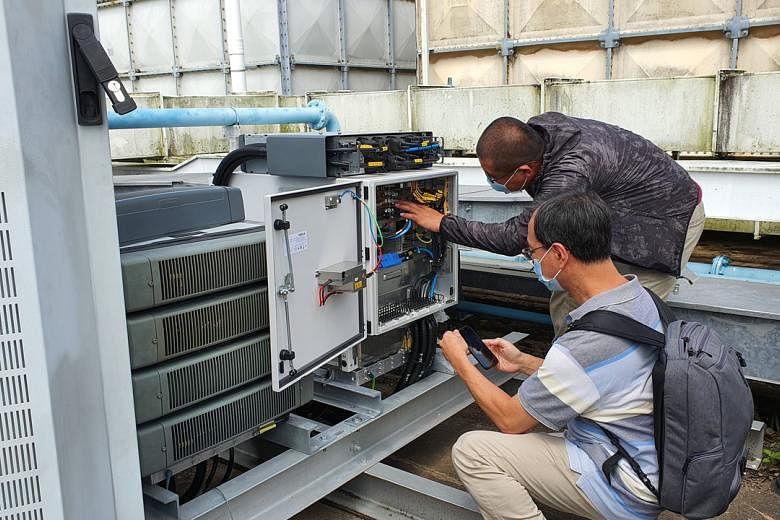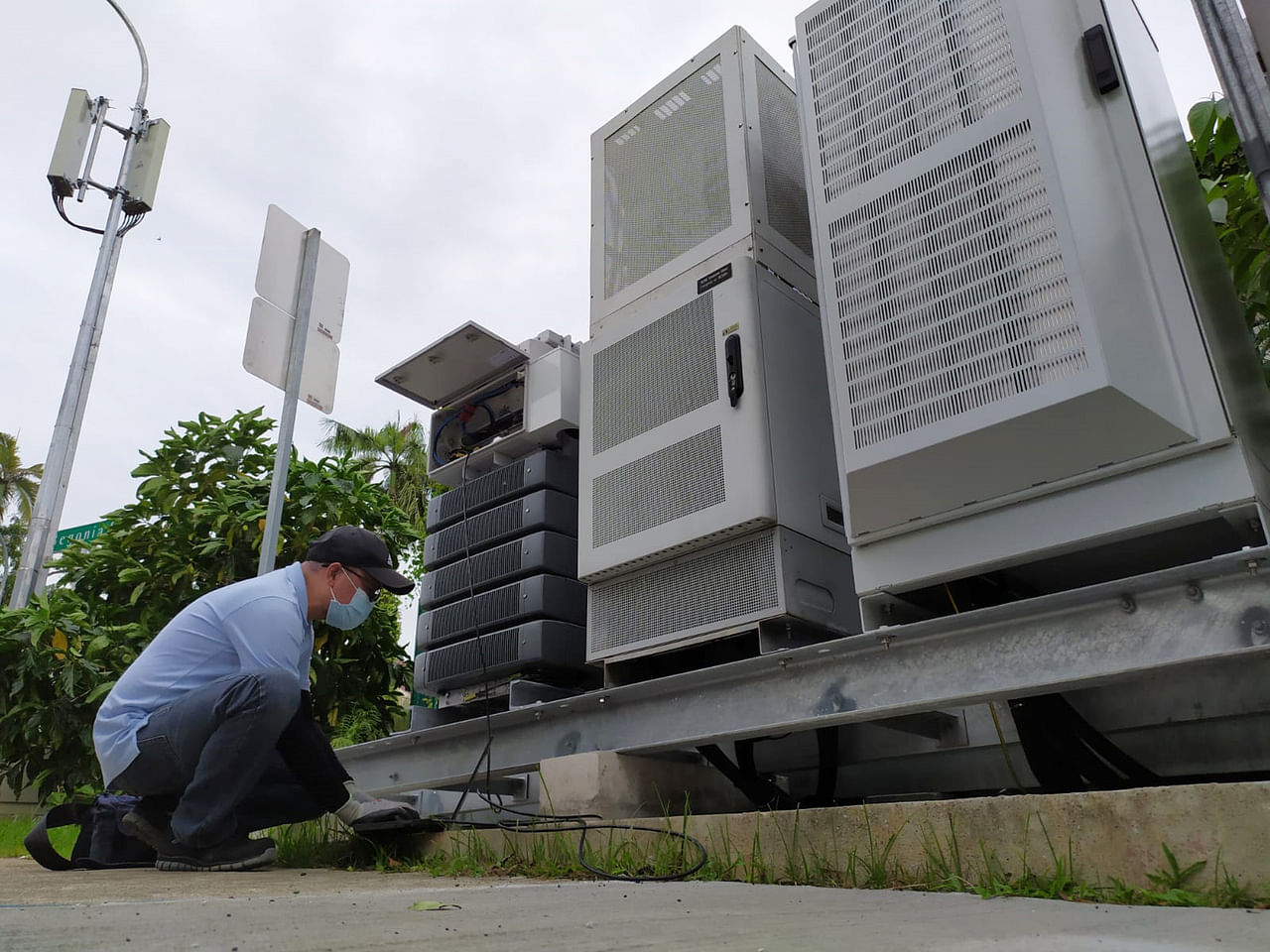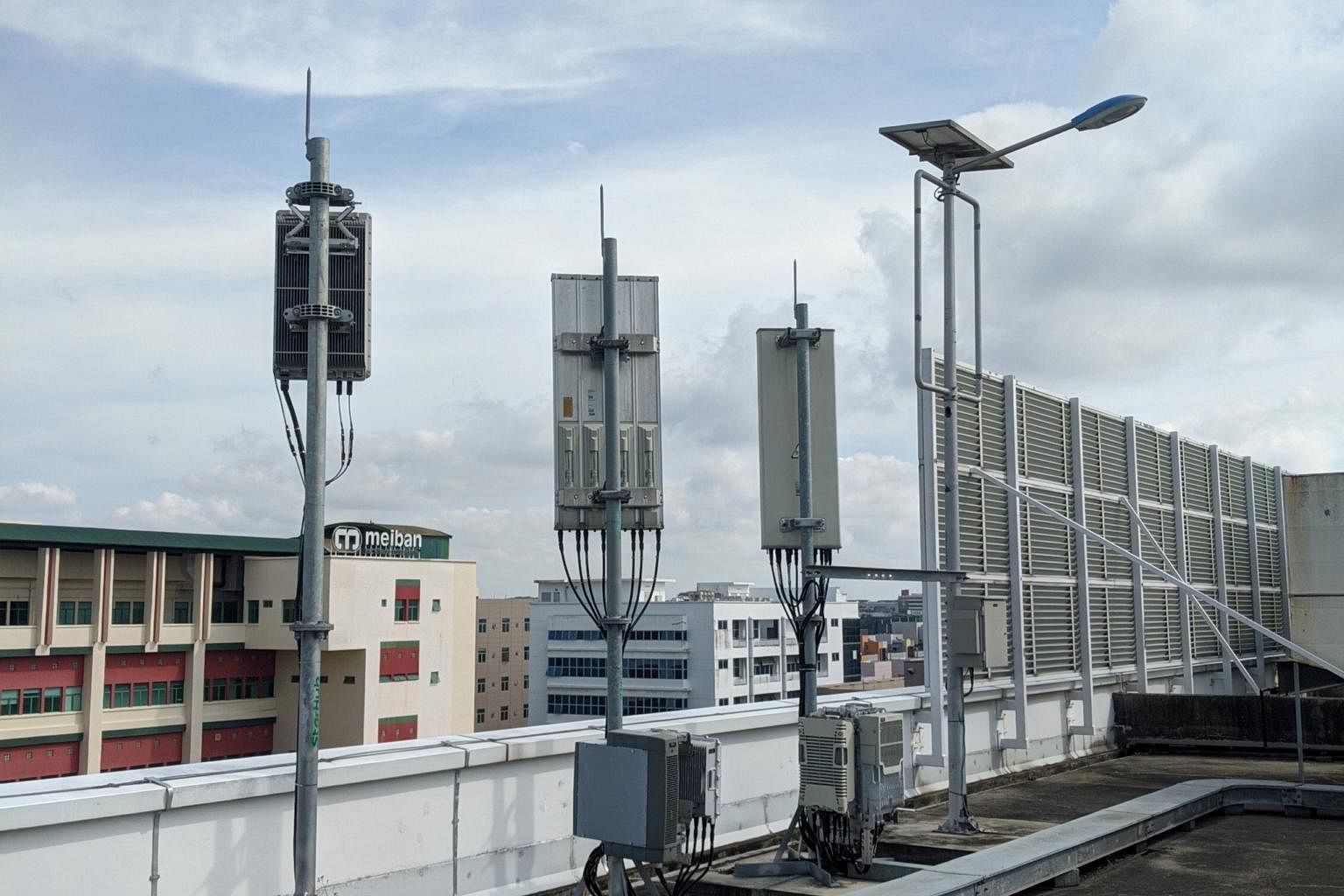
Research Institute H2i and telco StarHub will be embarking on a pilot that aims to improve rainfall measure in Singapore.
PHOTO: STARHUB
Gena Soh
SINGAPORE - Every time it rains, mobile phone signals are affected. Most users will not be able to tell the difference, although sensitive instruments can.
Now, research institute Hydroinformatics Institute (H2i) and telco StarHub will be embarking on a pilot that aims to improve rainfall measure in Singapore, by analysing these changes in mobile phone signals during rain.
The pilot will take place in the south-west of Singapore in the second quarter of this year, said H2i and StarHub in a statement last week.
The aim is to improve rainfall readings in Singapore, which are critical for water resource management, early flood warnings and weather predictions, they added.
Currently, national water agency PUB uses tools such as rain gauges and X-band radars to measure rainfall.
Rain gauges are essentially marked tubes that collect rain, giving meteorologists an idea of how much rain was collected at a point in that rainfall event. X-band radars measure rainfall by sending pulses of electromagnetic radiation into the atmosphere and listening for return signals scattered back by rain droplets.
But there are limitations to the data collected through these methods.
Dr Munsung Keem, radar specialist from H2i, said: "Rain gauges can only measure rainfall data at a given point, making data collected sporadic and distributed sparsely around Singapore.
"Although radar tools can collect data across wide areas spanning 30km to 50km, radar waves are sometimes blocked by tall buildings like skyscrapers, making data collection incomplete."
In the tropics, where rainfall varies greatly over space and time, rainfall episodes can often be challenging to quantify and forecast, H2i and StarHub said.
"Having a greater variety and density of data sources can make modelling more accurate, and predictions more precise," they added in the statement.
When it rains, falling water droplets sometimes interferes with mobile signals being sent island wide.
These periodic interferences cause miniscule variations in mobile signal strength, which are usually automatically compensated for by StarHub's mobile base station and are recorded as they occur.

The new technology by H2i will be able to estimate rainfall from micro changes in mobile strength.
PHOTO: STARHUB
By tapping on StarHub's data from their network of "thousands of mobile base stations", the new technology by H2i will be able to estimate rainfall from these micro changes in mobile strength.
Such data has been recorded by StarHub for operational reasons for years, but this is the first time such data is being used for meteorological services in Singapore.
The technology was one of the four winners of PUB Global Innovation Challenge - a yearly competition by the national water agency inviting participants to address future water needs using the adoption of technology - last year.
A StarHub spokesman said: "StarHub is able to provide comprehensive round-the-clock data that outnumbers that of traditional rain gauges, plugging information gaps and supporting a more effective rainfall monitoring system."
This comprehensive data can be fed into computer models that predict rainfall across Singapore, which will then churn out predictions that are more precise.
This technology is promising because it will allow more rainfall data to be collected without investing in costly monitoring tools or the headache of finding a place to install these tools, said Dr Keem.

By tapping on StarHub's data from their network of "thousands of mobile base stations", the new technology by H2i will be able to estimate rainfall from these micro changes in mobile strength.
Such data has been recorded by StarHub for operational reasons for years, but this is the first time such data is being used for meteorological services in Singapore.
The technology was one of the four winners of PUB Global Innovation Challenge - a yearly competition by the national water agency inviting participants to address future water needs using the adoption of technology - last year.
A StarHub spokesman said: "StarHub is able to provide comprehensive round-the-clock data that outnumbers that of traditional rain gauges, plugging information gaps and supporting a more effective rainfall monitoring system."
This comprehensive data can be fed into computer models that predict rainfall across Singapore, which will then churn out predictions that are more precise.
This technology is promising because it will allow more rainfall data to be collected without investing in costly monitoring tools or the headache of finding a place to install these tools, said Dr Keem.

The mobile base stations have already been installed in set locations and maintained by StarHub. PHOTO: STARHUB
Moreover, because the mobile base stations have already been installed in set locations and maintained by Starhub, resource savings can be made through repurposing available tools.
Mr Chow Siew Loong, chief technology officer of StarHub, said: "We are delighted to collaborate with H2i to expand the use of our existing signal attenuation data for an important and meaningful purpose, and to help Singapore become more green and sustainable."
If the pilot is successful, the project could be extended to cover more of the island, and eventually lead to a full national roll-out, said H2i and StarHub.
Mr Yeo Keng Soon, director of PUB's catchment and waterways department, said: "Should the pilot prove successful, this innovative project by H2i and StarHub will provide greater spatial coverage and complement PUB's existing rainfall monitoring systems."
"This will further aid us in the timely deployment of our fleet of flood response vehicles during any flash flood events."
Moreover, because the mobile base stations have already been installed in set locations and maintained by Starhub, resource savings can be made through repurposing available tools.
Mr Chow Siew Loong, chief technology officer of StarHub, said: "We are delighted to collaborate with H2i to expand the use of our existing signal attenuation data for an important and meaningful purpose, and to help Singapore become more green and sustainable."
If the pilot is successful, the project could be extended to cover more of the island, and eventually lead to a full national roll-out, said H2i and StarHub.
Mr Yeo Keng Soon, director of PUB's catchment and waterways department, said: "Should the pilot prove successful, this innovative project by H2i and StarHub will provide greater spatial coverage and complement PUB's existing rainfall monitoring systems."
"This will further aid us in the timely deployment of our fleet of flood response vehicles during any flash flood events."
No comments:
Post a Comment